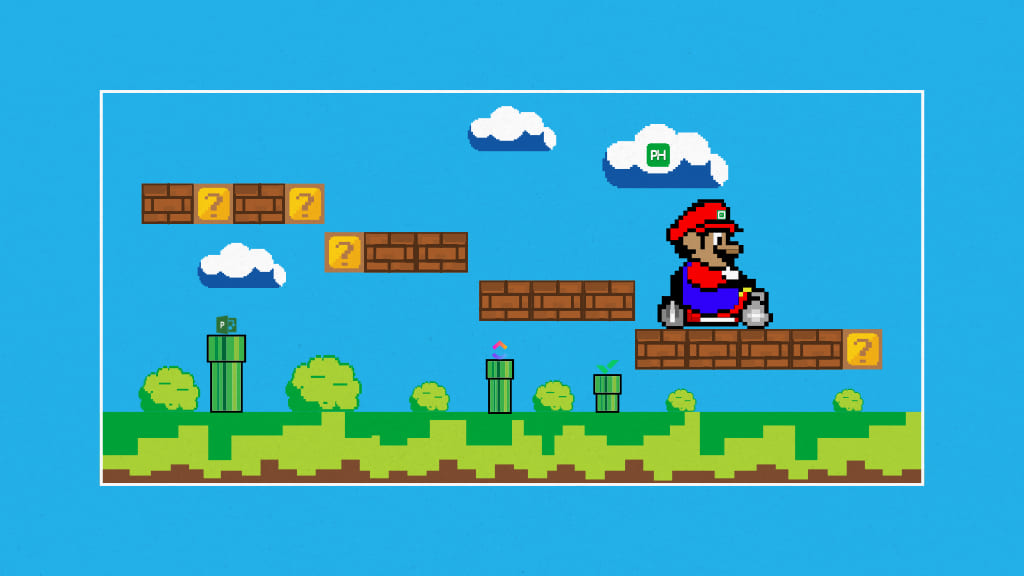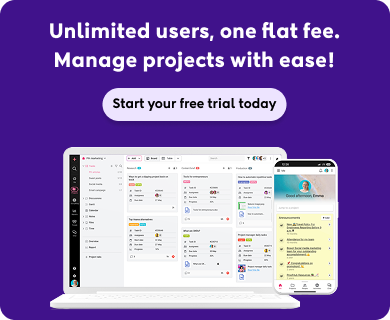Introduction
Gantt chart tools simplify the project planning process by providing an organized and visual representation of tasks, timelines, and dependencies.
In project management, there are several charts required for data visualization. Especially, for projects following the waterfall method, a Gantt chart becomes an indispensable tool. Gantt charts have become a key feature in almost every project management tool available in today’s market.
To help you find the right fit, we have made a list of the top 17 Gantt chart tools. Whether you’re working alone or leading a team, these online Gantt chart software can help you plan and organize your projects most effectively.
But before we compare them, let’s first understand what Gantt charts are all about.
What is a Gantt chart?
A Gantt Chart is a visual chart that displays a project roadmap and its progression. You get a clear picture of the start date and end date of each task. In some tools, these charts also show the person working on a particular task to help users with effective resource allocation.
When you look at a Gantt chart, you read it from left to right and top to bottom to understand the project’s progress over time. The horizontal line (x-axis) in the chart represents time, starting from when the project begins and ending when it’s finished. The vertical line (y-axis) shows a list of tasks in the order they happen. The exact position of tasks on the list doesn’t matter much; their timing is important.
Gantt charts are handy when you want to spread the workload evenly among your team members. The chart provides you with the involvement of various team members, so you can plan your resources and future project ideas accordingly.
If you want to learn more, you can check out this well-detailed guide that contains all you need to know about Gantt charts.
Best Gantt chart tools for visual roadmaps
Here is a list of 17 top Gantt chart tools for all kinds of businesses and projects. Remember that the list’s order doesn’t mean one tool is better than another.
We’ve looked at their features, pros, cons, pricing, and user ratings to give you the lowdown. We advise you to carefully align your requirements with the Gantt chart software that provides the most value to your business.
1. ProofHub
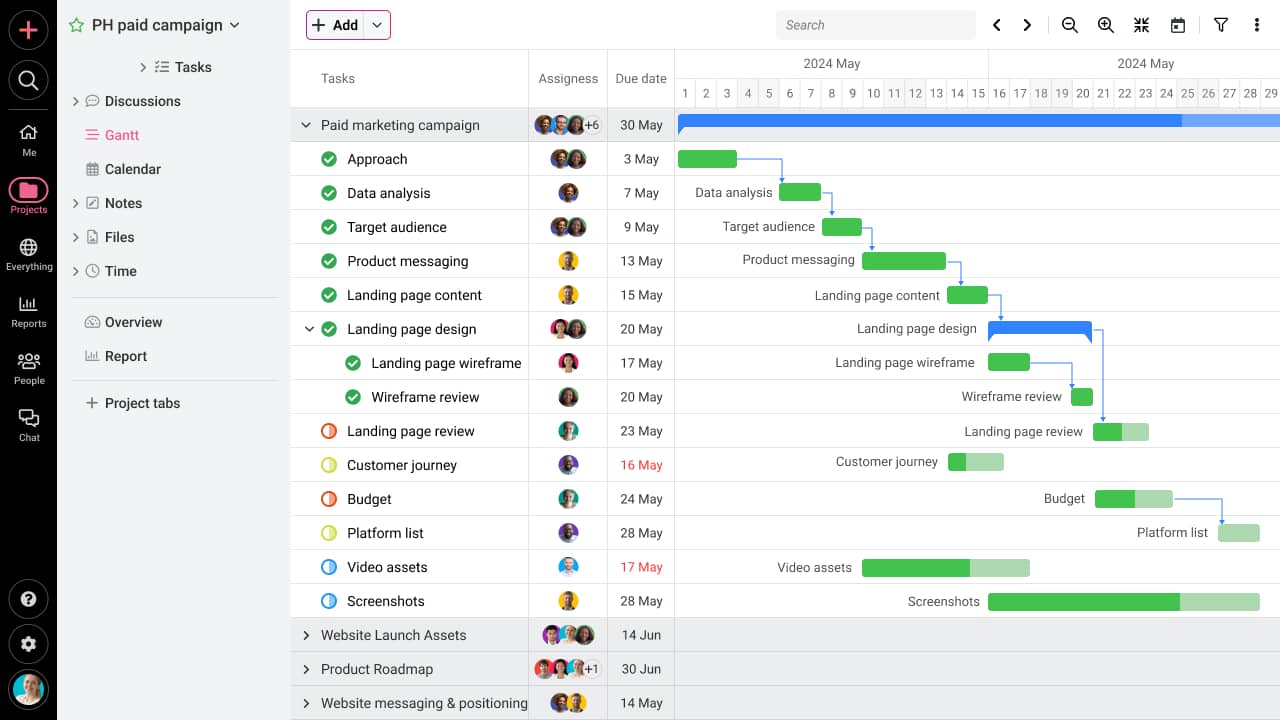
ProofHub is a feature-rich project management software with easy-to-use, interactive, and powerful Gantt charts. These allow you to easily visualize, plan, schedule tasks, and create the project timeline.
You can break down projects easily into tasks, subtasks, and milestones, ensuring clarity in your workflow. This not only streamlines your workflow but also facilitates effective prioritization.
Managers can pinpoint critical paths with ProofHub’s Gantt charts, identifying tasks crucial for timely project completion. They can drag and drop tasks to adjust schedules and accommodate variables like resource availability. This flexibility allows you to adapt to changes in real-time. Additionally, you can export and print the Gantt charts for comprehensive documentation.
Key features
- Four different project views to visualize your work.
- Activity log to monitor all project activities and updates across projects.
- In-built time tracking to accurately track team time with timesheets.
- In-built chat for communication and file sharing among team members.
- Proofing to review, approve, and share feedback with markup tools.
- Get insights into project and team performance with detailed and custom reports.
- Ultimate control over who sees what with features like custom roles for guest collaboration.
Pros
- All-in-one project management and team collaboration tool
- Flat pricing model with no per-user fee.
- Customizable and user-friendly interface.
- One solution for several teams within an organization.
Cons
- Not suitable for individual users.
- Budgeting is available through integration only.
Pricing
ProofHub offers two paid plans and a 14-day free trial.
- The Essential plan, starting at a flat $45/month, allows unlimited users to manage up to forty projects
- The Ultimate Control plan, priced at a Flat $89/month, allows unlimited users to manage unlimited projects.
For monthly billing, the plans cost $50/month and $99/month, respectively.
User ratings
- G2: 4.5
- Capterra: 4.5
2. GanttPro
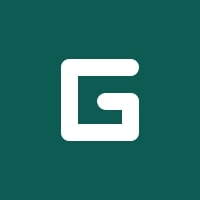
GanttPRO is recognized as one of the popular Gantt chart software options available. You can create and assign tasks, establish due dates, and monitor progress. Along with extensive customization options, it offers critical path highlighting for sequencing the tasks.
This helps with quick identification and prioritization to avoid delays. Its user-friendly design includes a mini-dashboard for simultaneous project oversight and resource monitoring. GanttPRO is a suitable option for small teams aiming to get better at project management.
With its easy-to-set-up interface, teams can directly jump into meticulous project planning. Here are some of the other features that GanttPro offers.
Key features
- Grid, kanban boards, and project portfolio view
- Drag and drop task prioritization
- Resource scheduling to match the capacity and demand.
- Guest user access for clients
- In-built time and budget tracking
Pros
- Easy onboarding
- Simple user-friendly interface
- Pre-figured templates to quickly get started.
Cons
- Limited collaboration and communication features
- Lack of advance reporting
- The mobile app is not up-to-date.
Pricing
GanttPRO offers an initial free trial for 14 days. After that, users can select from the following paid plans based on their requirements.
- The Basic plan costs $7.99 per user/month when billed annually (when bought for 5+ users)
- The Pro plan costs $12.99 per user/month when billed annually (when bought for 5+ users)
- The Business plan costs $19.99 per user/month when billed annually (when bought for 5+ users)
- The Enterprise plan pricing is available by contacting the sales team
Ratings
- Capterra: 4.8
- G2: 4.8
3. Microsoft Project
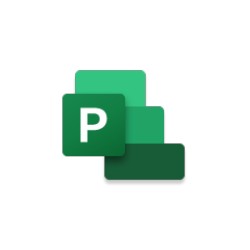
Microsoft Projects has been around for over three decades and provides solutions to several industries. It offers a dedicated platform for project management with powerful Gantt chart capabilities. Unlike the Gantt charts offered in MS Excel, it provides advanced functionalities tailored for complex projects.
This includes resource allocation, task dependencies, and comprehensive scheduling options.
The Gantt charts can be customized for clear visualizations of project timelines and progress. Additionally, it integrates with other products offered by Microsoft, that your teams might already be using.
However, before investing in Microsoft Project, it’s essential to consider other factors too. The cost, learning curve, and complexity of features may not fit the scale of your project.
Key features
- Robust reporting capabilities with Power BI integration
- Pre-built templates
- Integration with Microsoft Teams for collaboration
- Enterprise resource planning and management
- Guest user access to edit and update task lists.
Pros
- Reliable support from Microsoft
- Both on-premise and cloud solution
- Integration with other tools in the Microsoft 365 suite.
Cons
- Steep learning curve
- Outdated interface
- No updates for on-premise licensing
Pricing
Microsoft Project has 3 plans:
- The Project Plan 1 costs $10 per user/month
- Project Plan 3 costs $30 per user/month
- Project Plan 5 costs $55 per user/month
Microsoft Project can be costly for a small business, moreover, for the features offered by this tool, the prices are not justified.
User ratings
- G2: 4.0
- Capterra: 4.4
Read – Best free & paid Microsoft Project alternatives & competitors
4. nTask
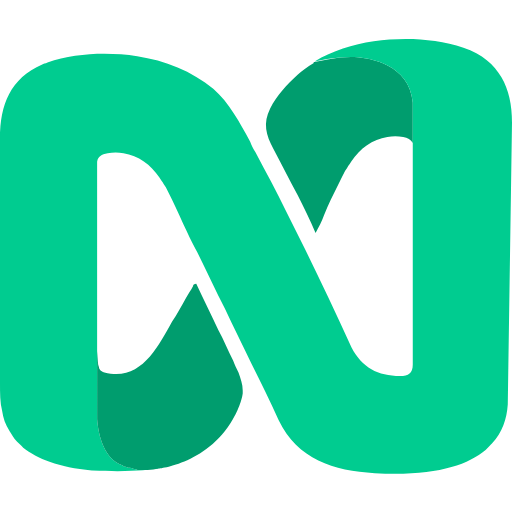
nTask is a project management tool that offers a variety of features at a competitive price point. nTask interactive Gantt charts help you to visualize and manage timelines effectively. You can create dependencies with different ordering options like start to start, finish to start, and more.
Also, the tool allows you to assign issues and manage risks directly from the Gantt view.
The Gantt chart feature of nTask truly shines because of its task organization. You can link the sub-tasks to parent tasks to ensure a proper hierarchy. Additionally, you can use to-do lists and milestone tracking to further enhance the project organization.
Key features
- Built-in time tracking for keeping track of the time spent by users on various tasks.
- Effective for risk management and issue tracking.
- Assign multiple collaborators on the same task.
Pros
- 24X7 real-time support
- User-friendly dashboards for effectively using the tool
- Simple and quick onboarding.
Cons
- Other views apart are limited.
- Fields in work reports are limited.
- Customization as well as built-in templates are limited.
Pricing
- The Premium plan is priced at $4 per user per month, billed monthly, and $3 per user per month billed, annually for individuals or teams just getting started with project management.
- The Business plan costs $8 per user per month, billed monthly, and $12 per user per month, billed annually for teams that need to create projects and plans with confidence.
- The Enterprise Plan for teams that need customizations, enterprise-grade security, and advanced features, Ntask Manager offers an Enterprise plan. The pricing for this plan is available upon contacting their support team.
User ratings
- G2: 4.4
- Capterra: 4.2
5. Celoxis
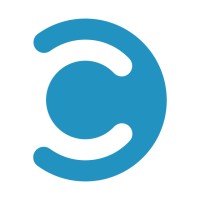
Celoxis is a great project management software, primarily suitable for engineering projects. Its Gantt chart feature offers a user-friendly interface to create detailed Work Breakdown Structures (WBS). You can include tasks and milestones with defined start and finish dates.
Additionally, you can modify the sequences as needed to better align with project goals and timelines. You can simply click and move tasks to different positions, adjusting their order and structure within the project timeline.
For a comprehensive understanding, Celoxis provides the flexibility to view schedules at various zoom levels. Also, you can secure project data storage through auto-save and manual save options.
Key features
- Powerful dashboards and reports provide you with an all-around view of the project progression.
- Allocate resources based on the existing workload of your team members, thereby ensuring even distribution of workload.
- Allow team members to modify task dependency as per deadlines and workload.
Pros
- Time tracking for quick invoicing and billing.
- Highly customizable and intuitive dashboard.
- Keep track of the overall workload of your team.
Cons
- Small issues occasionally happen during scheduling tasks.
- Custom fields in reports are not available.
- Custom access and permissions are not defined properly.
Pricing
Celoxis has 2 tiered pricing structure:
- Cloud Version: $25 for the Manager role and $15 per user/month when billed annually. (Minimum 5 users)
- On-Premise Version: One-time license fee of $450 per user, with a minimum of 5 users required.
User ratings
- G2: 4.4
- Capterra: 4.4
6. Gantter
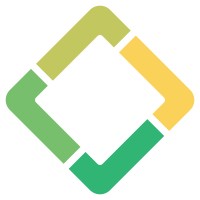
If you are an avid user of Google Workspace to handle your teams and tasks, Gantter might be the Gantt chart tool you are looking for. It excels at bringing together multiple tasks, timelines, and teams. Gantter allows you to link tasks hierarchically to track tasks, costs, resources, and baselines for your projects from one convenient location.
With Gantter you get access to 600+ community-contributed templates that you can use to organize and manage your projects. This helps you save time and also serves as an instant and quick support system. You will be at home with Gantter because of its easy and simple integration with Google Workspace.
Key features
- Simple and direct integration with Google ensures users are familiar with the workspace.
- Effectively view data and resource distribution using the built-in tableau analytics.
- Share real-time updates and details with clients.
Pros
- Create simple and interactive Gantt charts
- Easily share and open Microsoft project files
- Seamless integration with Google apps
Cons
- Does not support an instant communication facility
- Customer support is not active
- Compatibility issues on certain OS.
Pricing
Gannter has 3 plans
- Gantter Cloud costs $50 per user when billed annually (Ideal for single users)
- Gantter for Google Drive costs $50 per user when billed annually (Ideal for Google users)
- Gantter for Google Workspace costs $50 per user when billed annually (Ideal for teams)
User ratings
- G2: 4.0
- Capterra: 4.1
7. Wrike

Wrike is one of the best choices for handling complex projects with multiple teams and workstreams. You can create visual timelines with ease. With a transparent platform and by setting priorities, you can ensure that your team completes deadlines on time.
The best part is that you can easily import charts from Excel or Project, which makes switching to this tool easy. You also get more than 400 templates that you can use to customize your Gantt charts as per preference. Also, the ability to schedule tasks and a complete and accurate view of project progress provides a strong point.
However, the user interface can be overwhelming for new users as also the rigidity that will not be idle for certain teams.
Key features
- Make modifications to tasks with dependencies without the need to change dependent tasks individually
- Every time you make changes in the workflow, your team members are notified automatically
- Import data with ease without the need to manually input information
Pros
- Easily convert your strategy into actionable plans
- Reports for providing clients with up-to-date information
- Print Gantt charts with ease
Cons
- Poor response from the customer support team
- The multi-user features is clumsy
- Out-dated user interface, and difficulty to scale up.
Pricing
- The Team plan is priced at $9.80 per user/month for 2 to 25 users when billed annually
- The Business plan is available at $24.80 per user/month
- The Enterprise Plan and Pinnacle Plan are available through contacting the sales team
User ratings
- G2: 4.2
- Capterra: 4.3
Read more –Best Wrike alternatives & competitors for project management
8. Instagantt
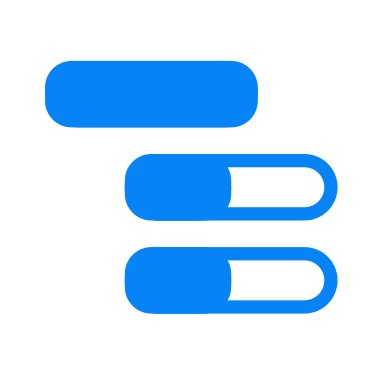
Instagantt is a simple Gantt chart software, best suited for small teams. You can easily manage and edit task flow with simple drag-and-drop functionalities. Its primary function revolves around scheduling and progress tracking, providing a collaborative space for efficient and effective teamwork.
Beyond managing tasks, Instagantt offers a seamless platform for team coordination and information sharing. It provides features like email notifications, comments, and file attachments, it ensures team members remain well-informed and connected throughout project execution.
Key features
- Gantt charts provide a transparent and detailed view of the task progression.
- Helps in keeping your remote teams on the same page by ensuring proper visibility of tasks across timelines.
- Manage multiple projects and workspaces using the robust chart features
- Custom view and custom fields
- Custom color options for progress bars
Pros
- Effectively monitor task progression, and ensure timely completion
- Identify bottlenecks early and rectify them at the earliest
- Simple and effective integration with Asana
Cons
- The user interface is sometimes too cluttered and messy
- Exporting Pdf or images is not clear
- Custom roles and permissions are not defined properly
Pricing
- The Individual plan costs $12 per user/month
- The Team plan costs $24 per month for 3 collaborators ($10 per additional user)
User ratings
- G2: 4.3
- Capterra: 4.3
9. Open project
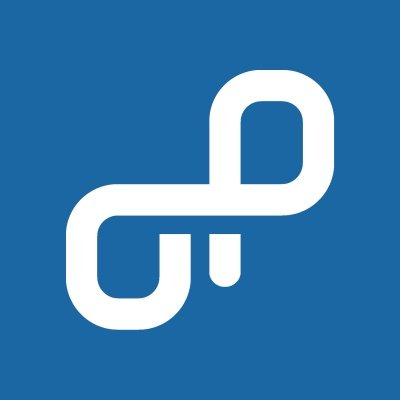
OpenProject is software that simplifies the overall process of project management. The Gantt charts are useful for creating a timeline and visualizing project plans. They are completely customizable and you can easily set up charts to work completely as per your requirements.
You can schedule the tasks of your project and see the steps required to finish the project successfully. The ability to ‘zoom in’ and ‘zoom out’ allows you to see daily to yearly project progress. This works best for the long-term visualization of projects during retrospectives.
Key features
- Agile and traditional methodology support
- High-quality data security measures
- Milestone and task dependency management
Pros
- The user interface is simple to understand and easy to use
- Highly customizable task management features
- Share saved timeline view with others
Cons
- Advanced features are available only for paid users, the free plan is very basic
- The paid plan is also underpowered in comparison to other tools with similar costs
- The overall system is a little buggy at times
Pricing
- The Basic plan costs $7.25 per user/month for a minimum of 5 users (when billed annually)
- The Professional plan costs $13.50 per user/month for a minimum of 25 users (when billed annually)
- The Premium plan costs $19.50 per user/month for a minimum of 100 users (when billed annually)
User ratings
- G2: 3.7
- Capterra: 4.5
10. ClickUp
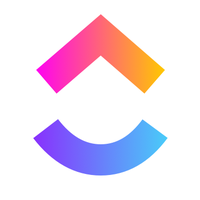
ClickUp provides an interactive user interface with a plethora of features. Though they might become hard to find at first among so many project views, you can efficiently use Gantt Charts to streamline your project tasks within ClickUp.
The software allows you to assign start and end times for tasks, and track the progress of a task. You can create spaces for different departments. Further, you can quickly get an overall bird’s eye view of the project anytime. The critical path ensures that your team works on the right track toward completion.
Key features
- 15+ Project views to get into details
- Milestone tracking
- Pre-build templates to get started easily
- Tables with relational databases
- Whiteboards for discussion and brainstorming
Pros
- Highly customizable interface
- Great technical customer support
- Free version for individual users and extremely small teams
Cons
- Overwhelming features
- Steep learning curve and initial setup
- Cumbersome navigations due to permission and access issues
Pricing
- The Unlimited plan is priced at $7 per user per month, billed annually, or $10 per month per user, billed monthly.
- The Business plan costs $12 per user/month billed annually, or $19 per month when billed monthly.
- The Enterprise plan for large organizations with specific needs, ClickUp offers an Enterprise plan. The pricing for this plan is available upon contacting their sales team directly.
User ratings
- G2: 4.7
- Capterra: 4.7
11. Smartsheet

Smartsheet is a work management app with integrated Gantt charts that helps you move faster and achieve more. The app offers a spreadsheet-like interface for all of your projects and work management needs. With Smartsheet, you can easily handle complex projects by breaking down their timelines into tasks.
Moreover, you can set time constraints for each task and assign dependencies to ensure the timely completion of tasks. Also, the customizable workflows and reports help you in fulfilling other aspects of project management with ease.
Key features
- No-code platform with relational databases
- Real-time editing and in-task comments
- Seamless integration with other business applications
- Automated alerts to keep everyone updated
- Gather customer feedback with forms
Pros
- Numerous templates to choose from.
- Integration with Microsoft Teams.
- Exporting project information is easy.
Cons
- The platform is laggy at times.
- Features are limited in the low-tier platforms.
- Steep learning curve
Pricing
- Smartsheet offers a Free plan with limited features for 1 user and up to 2 editors.
- The Pro plan is priced at $7 per user/month when billed annually or $9 per user per month when billed monthly. It includes advanced features and allows for a maximum of 10 users with unlimited viewers.
- The Business plan starts at $25 per user per month when billed annually, or $32 per user per month when billed monthly.
- The Enterprise plan for organizations is available by contacting their sales team, tailored to your specific requirements.
User ratings
- G2: 4.4
- Capterra: 4.5
12. Workzone
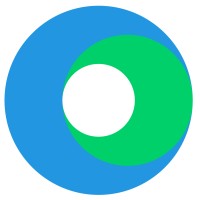
Workzone integrates a comprehensive Gantt Chart software, enabling users to visualize project tasks and schedules effectively. This built-in feature allows seamless project creation and editing directly within the tool, empowering users to initiate and manage project schedules effortlessly.
Workzone offers a comprehensive bird’s-eye view of projects, facilitating quick assessment of timelines, task dependency adjustments, and flexible adaptations to changing work schedules.
Users can efficiently manage resources, ensuring the workload aligns properly with the resource availability.
Key features
- Team members can share files and messages instantly
- Timely reminders and notifications
- Version control minimizes control confusion.
- Centralized file organizing
Pros
- User-friendly interface with intuitive dashboards
- Save your project as a template
- Customer support is quick and highly responsive
Cons
- Cannot open tasks in a new tab on the browser
- The learning curve is quite steep
- Overwhelming features make it confusing for first-time users
Pricing
Workzone offers 3 plans for different team sizes and needs:
- The Team plan costs $24 per user/month. Designed for teams of five or more users.
- The Professional plan costs $34 per user/month with a minimum of 5 users.
- The Enterprise plan is available by contacting the sales team.
User ratings
- G2: 4.2
- Capterra: 4.8
13. Project Insight
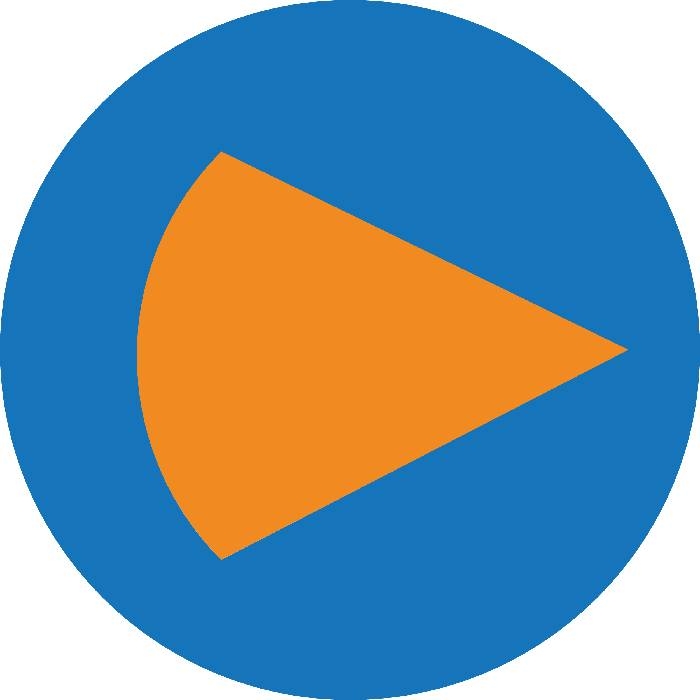
Project Insight is an enterprise-level online Gantt chart software to help teams of any size work better. Just as the name suggests you will be able to get a deep insight into project details that include expenses, approvals, issues, scheduling, and many more.
You get a comprehensive set of features that you can use to delegate tasks, monitor productivity, and collaborate effectively and easily with your team members, clients, and stakeholders. The intuitive interface helps you simplify problems as per your business needs.
Key features
- Personalized dashboards to see relevant information at a glance
- Assign, track, and update tasks with real-time collaboration
- Log billable and non-billable hours
- Set clear milestones to monitor progress visually
- Easy approvals and project requests
Pros
- Gantt chart creation from Microsoft Project or Excel data
- Task dependencies for swift schedule modifications
- Simplified timesheet compilation and submission
Cons
- Takes time to configure and set-up
- Managing bigger files is cumbersome
- It has an outdated UI/UX. It is constantly glitching
Pricing
- Free for individual users and small teams
- The Pro plan costs $9 per user/month, suitable for small to mid-size businesses
- The Business plan costs $19 per user/month for multiple teams in a company
- The Enterprise plan is available through a quote
User ratings
- G2: 3.6
- Capterra: 4.4
14. Agantty

The best part of Agantty is that it has beautifully arranged Gantt charts and the interface looks neat and clean. The tool offers an easy-to-use platform for planning out complex projects with ease. Agantty comes with the customization choices available in Gantt charts.
These charts can help you plan and manage multiple projects with ease. Further managing big teams becomes easy because of simple functions.
Key features
- You can easily view pending tasks on the Gantt chart and also provide a list of projects that are underway.
- Team members have the ability to change tasks and readjust workflow as per the deadline.
- Filter and sort tasks for structured work.
- Easily organize tasks, team members, and projects with simple movements.
- Manage team access and permissions for viewing and editing tasks.
Pros
- The dashboard is neat and user-friendly
- Flexibility to edit charts and make changes
- Customizable option for simplifying workflow
Cons
- Mobile app has a lot of glitches
- You need to manually sort tasks
- The Autosave feature is not available in Notes
Pricing
- Free 14-day trial with all features with 1 project
- The Premium plan costs 4.90€ per user/month or 50€ per year
User ratings
- G2: 4.0
- Capterra: 4.6
15. SmartDraw
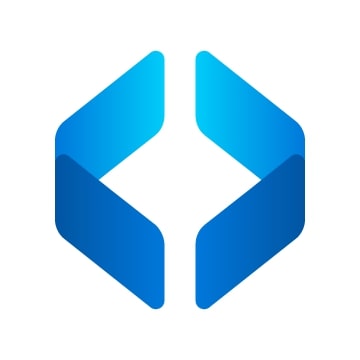
SmartDraw is a Gantt Chart tool that allows you to effortlessly switch between two different views of your project—a Gantt chart and a mind map. SmartDraw makes it easy to brainstorm projects, run meetings, manage deadlines, and create reports all on the same platform.
SmartDraw shines for its usability. You can effectively design workflow with simple information and SmartDraw’s built-in automation does the rest. However, when it comes to managing projects, SmartDraw requires additional integrations, and you cannot completely depend on this one tool.
Key features:
- Pre-built templates and designs help you to build Gantt charts with ease.
- Boost productivity and improve the communication of your team by working with a transparent workflow.
- Effectively import data from other tools for building charts quickly.
- Seamless integration with cloud computing services like AWS and Azure
Pros
- Powerful automation features
- Intuitive and clean user design
- Export and import files in a number of formats
Cons
- Poor response from the customer support team
- Not highly suitable for custom workflows
- The tool is unstable and collapses often
Pricing
SmartDraw has 3 pricing plans:
- The Individual plan costs $9.95 per month when billed annually
- The Team plan costs $8.25 per user/month when billed annually (minimum of 3 users)
- The Site plan costs $2,995 per year, (Suitable for large organizations)
User ratings
- G2: 4.6
- Capterra: 4.1
16. TeamGantt
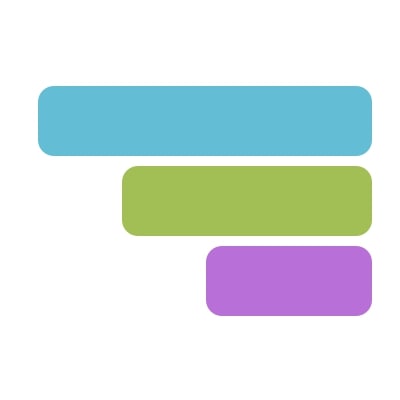
TeamGantt not only helps you plan and manage your projects but also makes project scheduling an effortless activity. Also, you can invite your team members and co-workers to view and edit a Gantt chart. It is easy to create tasks for your project and add them to a Gantt chart.
You have the flexibility to manage workloads for each individual on your team and make sure no one gets stressed out. With the time tracking feature, you can effectively identify how much time your team members are spending on various tasks.
Key features
- You can invite people even from outside your company to view or edit the task.
- Visually pleasing and simple Gantt charts help your team members focus primarily on tasks with minimal distractions.
- Transparent workflow ensures complete visibility of workflow to the entire team.
- Project portfolios to consolidate projects department-wise
Pros
- Quick and effective response from the customer support team
- Simple, intuitive, and user-friendly interface
- Easy to build and share Gantt charts
Cons
- Overlapping of tasks is not possible leading to crowding of the screen
- Need to manually count the number of tasks
- Gets a bit glitchy for complex and long projects
Pricing
- TeamGantt offers a free plan that allows one to create 1 active project with a maximum of 60 tasks
- The Pro plan costs $19 per manager/month when billed annually (Maximum 20 projects, unlimited tasks, and unlimited user collaborators)
- The Unlimited plan is available through contacting sales, the plan offers unlimited managers, projects, tasks, and collaborators, along with all software features.
User ratings
- G2: 4.8
- Capterra: 4.6
Read more – Top TeamGantt alternatives & competitors
17. Paymo
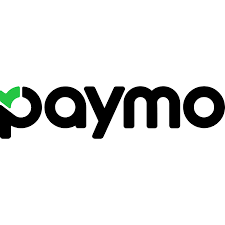
Paymo is a full-fledged task management software that helps teams to work better with advanced proper planning, scheduling, task management, and time tracking features. It’s a great tool to bring everyone together and on the same page.
Whether you’re part of a creative, marketing, web designing, or business consulting team, Paymo lets you work in harmony and helps you manage work faster and better. Paymo comes in handy with a Portfolio Gantt chart. This chart provides you with an immediate idea of your capacity, and if you will be able to take on new projects or not.
Key features
- Advanced task management tools, Gantt charts, and Kanban boards for accurate planning and scheduling
- Discussions and comments for real-time seamless collaboration
- Compare initial time estimates against actual work
- Customizable time and work reports
Pros
- Best for portfolio management using charts
- Online invoicing and billing system for clients
- Quick integration with popular tools such as Xero, useful for the administrative department
Cons
- Mobile applications are not developed completely
- The time-tracking feature works awkwardly
- Minimum learning curve
Pricing
- Paymo offers a Free plan that is ideal for users who want to use basic features at no cost.
- The Starter plan is billed annually at $5.9 per user/month or billed monthly at $9.9 per user/month.
- The Small Office is billed annually at $10.9 per user per month or billed monthly at $15.9 per user per month.
- The Business plan is billed annually at $16.9 per user per month or billed monthly at $23.9 per user per month.
User ratings
- G2: 4.6
- Capterra: 4.2
How to choose the right Gantt chart software
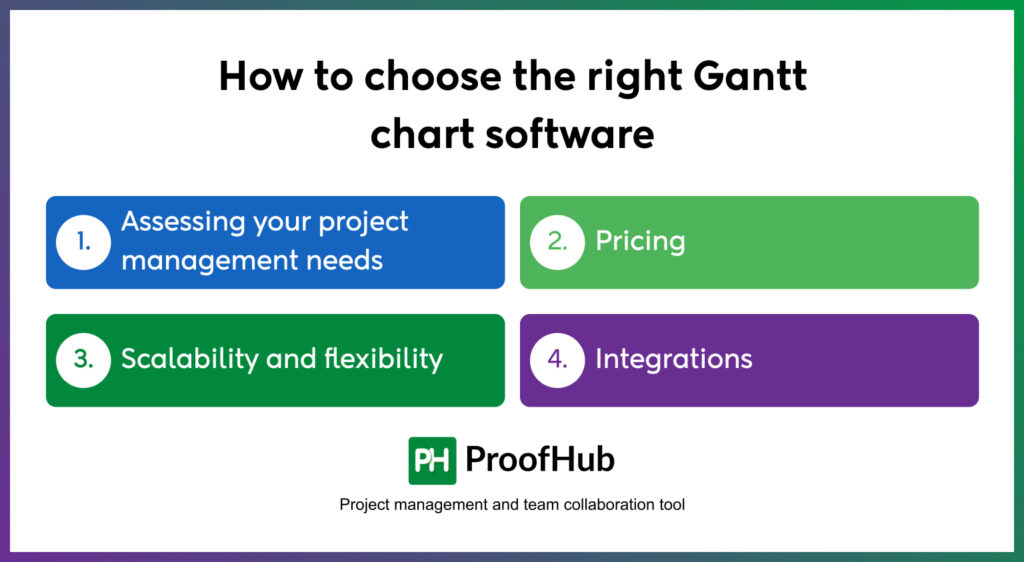
When it comes to selecting a Gantt chart tool for your team, there are specific points that you should consider. Here is a brief description.
Assessing your project management needs
Different teams have different workflows. A tool that suits the functioning of one team does not necessarily fulfill your requirements. So before making the final decision, make an analytical study of your workflow. Listing out the features that you want will help you narrow down the tool that offers you all those features.
You need not select a tool that provides you with a lot of features, a tool that is budget-friendly, or just because your competitor is using that tool. Always decide on a tool based on the features that you want.
Pricing
Decide on your budget. Do not compare different tools only on the basis of pricing. Look for a tool that provides you with the features that you want. Select a tool that falls within your budget with simple onboarding and a minimal learning curve.
Scalability and flexibility
Your team will grow, and the size of your projects will grow. So look for a tool that will grow with your business. You need to look into the future and assess a tool that will be suitable for your long-term goals. Changing different tools should not be preferred, as it eventually leads to a waste of productive time in the form of training, configuration, and onboarding time.
Also, the tool should provide you with customization options for suiting the typical requirements of the team. A lack of flexible custom options may cause the tool to be too rigid making it difficult for teams to work comfortably.
Integrations
Good tools for the Gantt chart should provide you with options to integrate multiple apps to simplify the overall workflow. Be it for communication, automation, invoicing, or any other purpose. Integration further helps in strengthening the overall functionalities of the tool. In some cases, simple integrations with common apps like Google Drive, Slack, or Dropbox simplify the workflow.
Benefits and limitations of using Gantt charts in project management
Gantt charts have long been a cornerstone in the arsenal of project management tools. However, it’s crucial to understand both the advantages and limitations associated with using Gantt charts in project management.
Benefits of Gantt charts
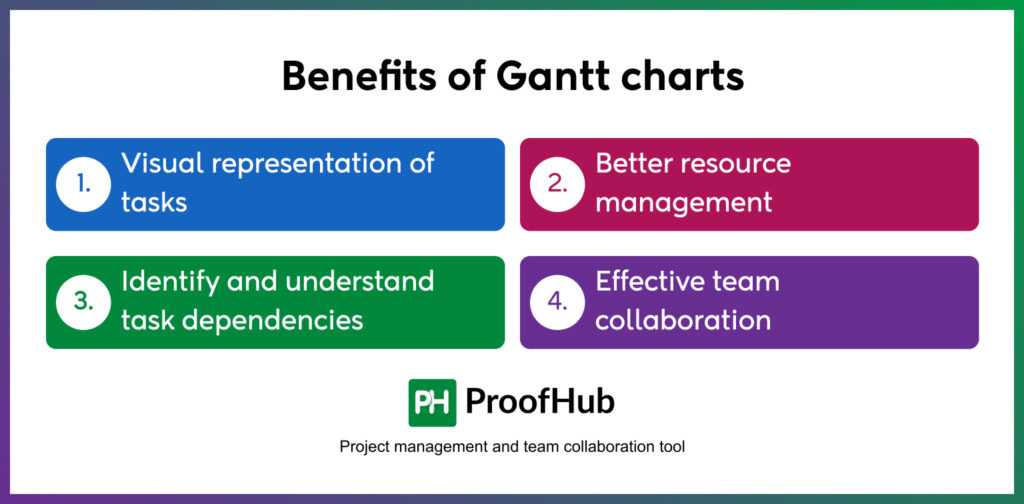
Gantt charts are powerful tools for managing projects. A few of the benefits they offer include
- Visual representation of tasks
Gantt charts allow you to have a clear overview along with additional details such as task assignees, start and due dates, etc.
You can also track the progress in real-time and even modify schedules according to the changes in deadlines. Managing tasks is much more effective when you can visualize them in a timeline view.
- Better resource management
When you have accurate information on how your resources are occupied in different project tasks, you can allocate your resources more efficiently.
Also, you will have a clear knowledge of who’s working on what. This will help you to make sure that you do not overwork any of your team members. By examining the Gantt chart of a project, you can easily estimate when your resources will become available and plan resource allocation.
- Identify and understand task dependencies
Have you ever missed a deadline because you weren’t able to identify and set dependencies between certain tasks?
Well, this is where Gantt Charts come in extremely handy. As you know, many tasks of a project depend on one another and thus, it becomes imperative to make such dependencies visible to avoid delays.
For instance, there may be a task in a project that cannot be started until some other task is completed. With a Gantt chart, it is possible to set dependencies among tasks and visualize those dependencies to ensure that they don’t get delayed due to negligence.
- Effective team collaboration
For projects with limited tasks and limited assignees, it’s easier for you and the people on your team to coordinate with one another. However, team collaboration becomes a challenge when you are dealing with complex projects that have a ton of tasks to manage.
A Gantt chart will come to your rescue in this situation by providing you with clear information on who’s working on what. It is also possible for your team to access Gantt Charts to know what tasks they’ve been assigned and the deadline for each task.
When each member of your team knows their assigned tasks and the people with whom they need to coordinate, the overall team collaboration becomes better.
Limitations of Gantt charts
Although Gantt charts add value to project management and have several advantages, there are certain limitations to relying on Gantt charts for project management.
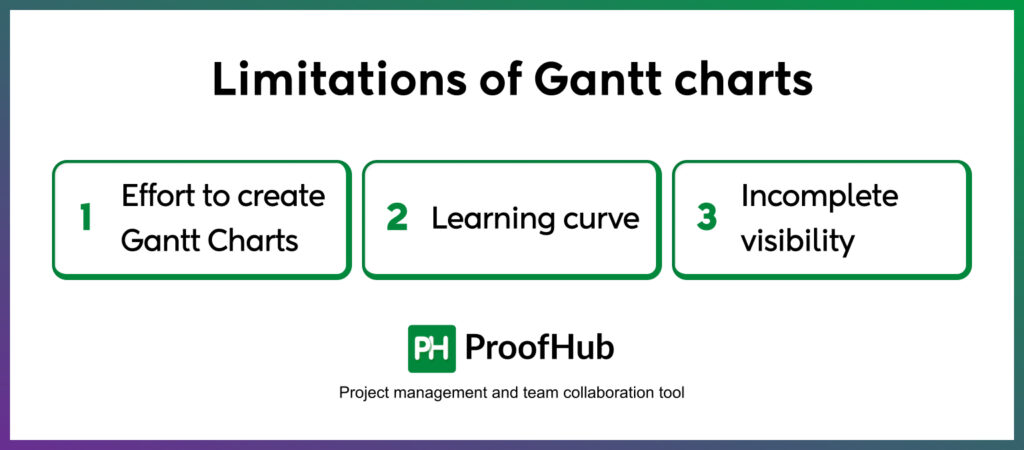
- Requires effort to create Gantt Charts
Creating Gantt charts is not easy. Although some tools may provide you with a drag-and-drop feature, it is quite a lengthy process to create Gantt charts. Also, users need to have a basic understanding of project management to efficiently use Gantt charts.
- Learning curve
Not all members of your team will be able to use Gantt charts. They will require you to learn the basics of Gantt charts. This may result in the loss of productivity hours for your team.
- Incomplete visibility
Not all tasks and subtasks in a project are visible on the same screen. You will have to click multiple times and scroll through to view complete data. This confuses and may in some cases lead to misunderstandings. To overcome this issue, many project management tools come loaded with alternatives to Gantt chart views. These alternatives offer detailed insight specific to one aspect of the project.
Conclusion
As a project manager, Gantt charts are among the most useful tools that you need to utilize. A Gantt chart tool provides you the vantage point from which you can see each and everything about your project, and even visualize how your project is moving towards its successful completion.
While you certainly want to try all the best project management tips and tools, it’s the Gantt chart tool that you just can’t afford to miss if you want to make your project management efforts more fruitful.
Take control of your project planning with ProofHub. Click the button below to get started and elevate your project management experience today!
Manage your projects and tasks efficiently with Gantt charts
FAQs
What is the best software to create a Gantt chart?
As the best Gantt chart app depends on your specific needs, there isn’t a one-size-fits-all app. However, popular options include ProofHub, Microsoft Project, Smartsheet, and GanttPRO. It’s essential to consider factors like user interface, collaboration features, and value for price to find the best fit for your project.
How do Gantt chart tools enhance project management efficiency?
Gantt chart tools enhance project management efficiency by providing a visual timeline of tasks and their dependencies. This visual representation allows for better planning, resource allocation, and tracking of project progress.
Adjustments and changes can be easily made in real-time on the Gantt chart, helping teams adapt to unexpected delays or shifts in priorities. This flexibility ensures that everyone stays on the same page, leading to improved communication and more effective decision-makin
What are some things to look for in Gantt chart tool?
While choosing Gantt chart tool, it is important to consider following factors:
Ease of use: Look for an intuitive interface that simplifies task creation and adjustment.
Collaboration features: Ensure the tool allows for easy communication and sharing of project details.
Customization options: The ability to tailor the Gantt chart to your project’s specific needs is crucial.
Real-time updates: Opt for tools that provide real-time progress updates for effective monitoring.
What are the potential challenges of using Gantt chart tools?
While Gantt charts are powerful project management tools, there are some challenges to be aware of. Over-reliance on the chart without regular updates can lead to inaccurate timelines. Gantt charts may also face resistance from team members who find them too complex. Additionally, adapting to unexpected changes in a project may require frequent adjustments to the Gantt chart, which can be time-consuming. Proper training and communication are crucial to overcoming these challenges and maximizing the benefits of Gantt chart tools.
Can Gantt chart tools integrate with other project management software?
Yes, many Gantt chart tools can integrate with other project management software, allowing seamless data transfer and collaboration across different platforms.
Are Gantt charts better than PERT charts?
Gantt charts are less complex than PERT charts, easier to read, and project managers can adjust tasks, and set dependencies as the project progresses.
